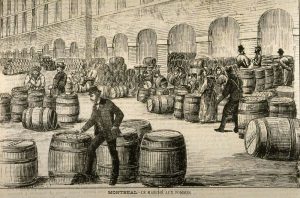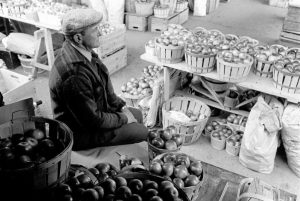Orchards slowly began to decline
Unfortunately, in the early 20th century, orchards on the Côte-du-Sud gradually began to lose steam and they continued to do so until the 1970s. What happened?
Paul-Louis Martin, historian and owner of La Maison de la prune, explains the impact of the advent of the railroad on the market for fruit grown on the Côte-du-Sud.
Schooners versus the railway – Enjoy this video with a transcript
Too many varieties is worse than not enough
This was the conclusion of research conducted by agronomist Aubert Hamel (1918-1998) in 1944. Côte-du-Sud fruit growers were offering too many varieties of apples, plums and pears. Buyers no longer knew what to expect. They preferred large quantities available all at once. The Côte-du-Sud orchards had a wide selection of fruit that ripened at different times and in smaller quantities in the case of each variety. This complicated marketing.
This was also the beginning of uniformity in many areas. In regard to fruit, buyers were looking for identical sizes, an almost uniform and attractive colour, a long shelf life and intact skin.
Consumers also had access to fruit from warmer climates, including bananas, oranges and grapefruit, and this trend has increased over the years. Novelty has always been attractive, even in food. Listen to this.
The little Damson plum lost its popularity – Enjoy this video with a transcript



